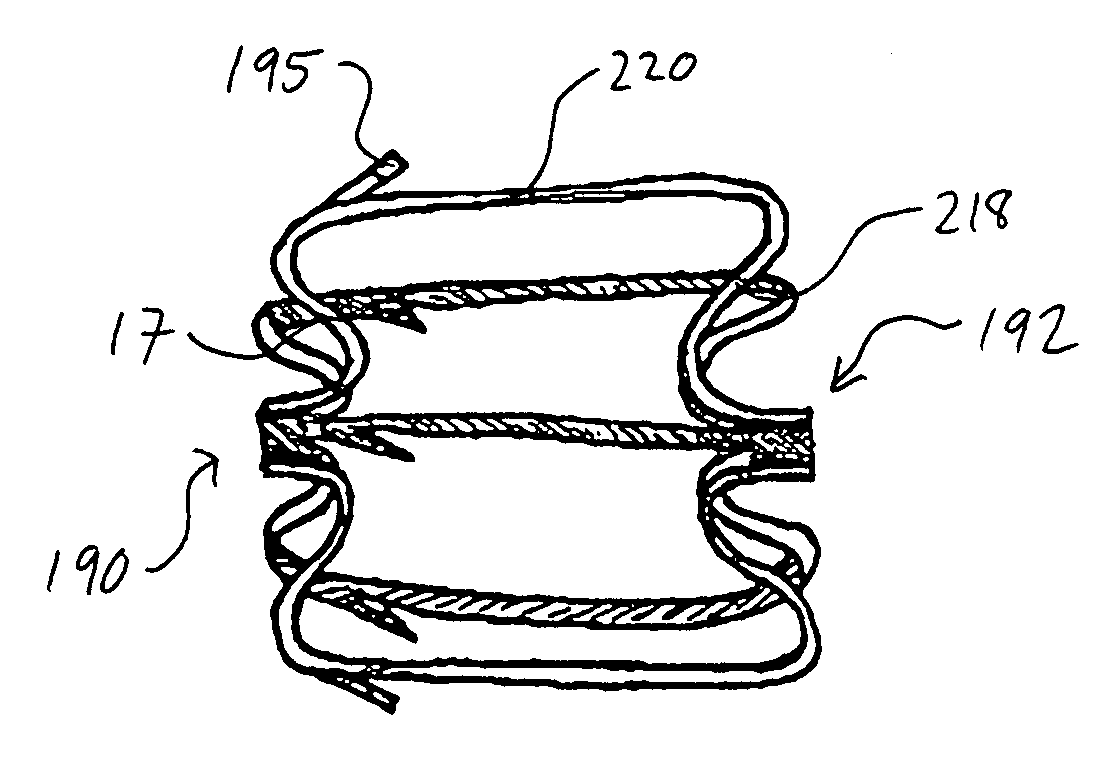Device for containing embolic material in the LAA having a plurality of tissue retention structures
a tissue retention structure and device technology, applied in the field of devices for containing embolic material in the laa, can solve the problems of irregular and turbulent blood flow in the vascular system, rapid and chaotic heartbeat, and affecting the quality of life of patients with atrial fibrillation, and achieve the effect of resisting compression of the appendage wall and preventing rotation and axial migration of the implan
- Summary
- Abstract
- Description
- Claims
- Application Information
AI Technical Summary
Benefits of technology
Problems solved by technology
Method used
Image
Examples
Embodiment Construction
[0063]FIGS. 1–3 show an embodiment of an occluding device 10 having features of the invention where an occluding member 11 is secured to a retention member 12 that is arranged to fix the occluding member in a desired position within a body passageway or cavity. The occluding member 11 generally has disc shape with an outer rim 13 around the perimeter of a frame structure 14 which supports a barrier 15. The outer rim 13 can be circular or polygonal, or any other shape that is suitable for conforming to the inside surface of a body cavity. A hub 16 can be located near the center of the occluding member 11 which serves to connect the retention member 12 to the occluding member, in addition to other functions. The outer rim 13 is typically made from a soft polymer material 17 which permits flexibility of the outer rim and facilitates sealing of the outer rim against the inside surface of a body cavity or passageway. The barrier 15 can be a thin mesh or film of material which serves to b...
PUM
 Login to View More
Login to View More Abstract
Description
Claims
Application Information
 Login to View More
Login to View More - R&D
- Intellectual Property
- Life Sciences
- Materials
- Tech Scout
- Unparalleled Data Quality
- Higher Quality Content
- 60% Fewer Hallucinations
Browse by: Latest US Patents, China's latest patents, Technical Efficacy Thesaurus, Application Domain, Technology Topic, Popular Technical Reports.
© 2025 PatSnap. All rights reserved.Legal|Privacy policy|Modern Slavery Act Transparency Statement|Sitemap|About US| Contact US: help@patsnap.com



